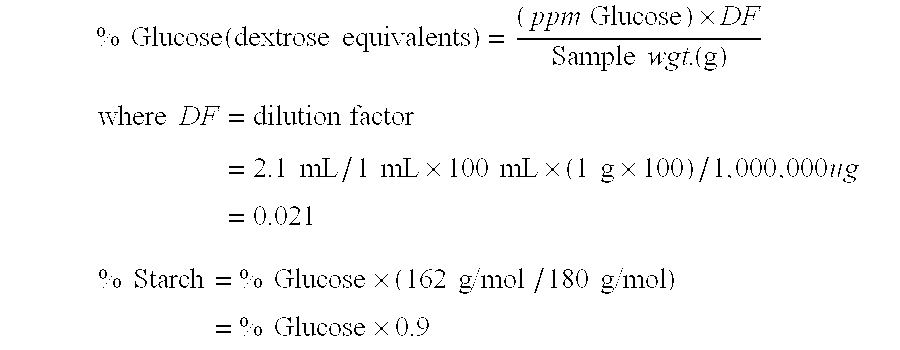Dilute fabric care compositions comprising thickners and fabric care compositions for use in the presence of anionic carry-over
a fabric care composition and anionic carryover technology, which is applied in the direction of detergent compositions, organic detergent compounding agents, chemistry apparatus and processes, etc., can solve the problems of increasing the difficulty of controlling the rheology of fabric care compositions, temporary machine failure, and formation of suds and scum residues, so as to save user effort and conserve cost and environmental impact of water usage.
- Summary
- Abstract
- Description
- Claims
- Application Information
AI Technical Summary
Benefits of technology
Problems solved by technology
Method used
Image
Examples
examples i
, II, and III
[0115]
EXAMPLESINGREDIENTSIIIIIIFabric Softening Activea5.40%5.78% 5.78% Ethanol0.73%0.78% 0.78% Cationic Starchb0.67%0.5%0.5%Perfume0.65%0.6%0.6%Rheology Modifierc0.35%0.275%0.8%Phase Stabilizing Polymerd———Calcium Chloride———DTPAe0.0023% 0.0023% 0.0021% Preservativef5 ppm5 ppm5 ppmAntifoamg0.015% 0.015% 0.015% Dye30 ppm30 ppm40 ppmAmmonium Chloride———Hydrochloric Acid0.0125% 0.0125% 0.0125% Deionized WaterBalanceBalanceBalanceCharacteristicspHh3.462.923.72Viscosityi95 cps88 cps173 cpsParticle sizesj1.049 μm0.9124 μm1.049 μm
aN,N-di(tallowoyloxyethyl)-N,N-dimethylammonium chloride.
bCationic starch based on common maize starch or potato starch, containing 25% to 95% amylose and a degree of substitution of from 0.02 to 0.09. Available from Cerestar under the trade name C*BOND ® and National Starch under the trade name CATO ® A2.
cAlcogum L-520
dCopolymer of ethylene oxide and terephthalate having the formula described in U.S. Pat. No. 5,574,179 at col.15, lines 1-5, where...
example iv
Making the Fabric Care Composition Using a Water Dispersible Structurant (Lab Scale)
[0116] Begin agitating base product at medium speed, or about 400 rpm, using an overhead IKA Werk Mixer with a Rushton impeller. Add the thickener into the agitating base product. Mix at 400 rpm for 2 minutes. Other adjunct ingredients, including but not limited to any perfumes or dyes, may be added to the base product once the rheology modifier has mixed with base product for 2 minutes. Mix final product for at least 5 minutes.
example v
Measuing Dispersability of Rheology Modifiers
[0117] Dispersability of rheology modifiers is measured using one of the following methods:
[0118] (a) 0.1 active weight % of the rheology modifier is added into 200 ml water using an overhead IKA Werk mixer with a Rushton impeller at low agitation, or about 200 rpm. Water may be acidified to pH 3 using hydrochloric acid to simulate typical fabric care compositions. Visual observations are made after 30 seconds, 1 minute and 2 minutes or at longer intervals as needed. Timing begins upon completion of rheology modifier addition. Preferred rheology modifiers disperse completely at or before 30 seconds or more preferably, immediately upon addition to water, showing no visible particles in the solution. Table I lists dispersability observations for various preferred rheology modifiers and non-preferred rheology modifiers of the present invention.
TABLE IDispersability Characteristics of Rheology Modifiers in WaterTimeMaterial testedInterval...
PUM
 Login to View More
Login to View More Abstract
Description
Claims
Application Information
 Login to View More
Login to View More - R&D
- Intellectual Property
- Life Sciences
- Materials
- Tech Scout
- Unparalleled Data Quality
- Higher Quality Content
- 60% Fewer Hallucinations
Browse by: Latest US Patents, China's latest patents, Technical Efficacy Thesaurus, Application Domain, Technology Topic, Popular Technical Reports.
© 2025 PatSnap. All rights reserved.Legal|Privacy policy|Modern Slavery Act Transparency Statement|Sitemap|About US| Contact US: help@patsnap.com

